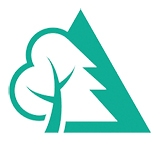Current scientific understanding about the spread of COVID-19 is transmission is most likely to happen when there is close contact (within 2 metres or less) with an infected person. The risk increases the longer someone has close contact with an infected person. The receiver needs to be exposed to enough virus for it to be consider an “Infective Dose”.
Respiratory secretions (droplets) containing the virus are likely to be the most important means of transmission; these are produced when an infected person coughs or sneezes.
There are 2 routes people could become infected:
- Secretions can be directly transferred into the mouths or noses of people who are nearby (within 2m) or possibly could be inhaled into the
- It is possible that someone may become infected by touching a person, a surface or object that has been contaminated with respiratory secretions and then touching their own mouth, nose, or eyes (such as shaking hands or touching door knobs then touching own face).
People Displaying Symptoms
The most important symptoms of coronavirus (COVID-19) are recent onset of any of the following:
- a high temperature – this means you feel hot to touch on your chest or back (you do not need to measure your temperature).
- a new, continuous cough – this means coughing a lot for more than an hour, or 3 or more coughing episodes in 24 hours (if you usually have a cough, it may be worse than usual).
- loss or change to your sense of smell or taste – this means you’ve noticed you cannot smell or taste anything, or things smell or taste different to normal.
If anyone has any of the symptoms listed above they must stay at home and arrange to have a test to see if they have COVID-19. Advice on Getting a Test
If they have received a positive coronavirus (COVID-19) test result, the clear medical advice is to immediately self-isolate at home for at least 10 days from when symptoms started. Do not go to a GP surgery, pharmacy or hospital. Advice on Self Isolation
If a worker develops a high temperature or a persistent cough while at work, they should return home immediately, avoiding touching anything as they leave and follow the advice on testing above.
What you must do if you have been in close contact with someone with symptoms
Close contact means:
- having face-to-face contact with someone (less than 1 metre away)
- spending more than 15 minutes within 2 metres of someone
- travelling in a car or other small vehicle with someone (even on a short journey) or close to them on a plane
If you in close contact assisting someone on site that are displaying Covid-19 symptoms then you must be alert to developing symptoms yourself and pay particular attention to social distancing and hygiene.
If you are subsequently identified as a close contact by NHS Test & Trace you must follow their advice on self-isolation. Advice if Identified as a Close Contact.
First Aid Treatments
This guidance is for treating people not currently displaying symptoms of Covid-19. If a person is displaying symptoms they should not be on site.
Preserving life is the overriding priority in any given first aid situation. This will include treating life-threatening injuries. If someone requires CPR or has life-threatening injuries, then the treatment overrides social distancing measures.
Before approaching any casualty stop and assess the situation, giving due regard for your own safety, as per normal first aid practice.
In the first instance assess a person’s injuries while maintaining 2 metres distance by observing the injury and talking to the casualty. If they have minor wounds then instruct them on how to treat themselves.
If the casualty doesn’t respond or injury requires treatment, then wear disposable gloves and eye protection.
Recognise cardiac arrest by looking for the absence of signs of life and the absence of normal breathing. Do not listen or feel for breathing by placing your ear and cheek close to the patient’s mouth. If you are in any doubt about confirming cardiac arrest, the default position is to start chest compressions until help arrives.
For your own protection place a cloth/towel over the victim’s mouth and nose and attempt compression only CPR and early defibrillation until the ambulance (or advanced care team) arrives. Put hands together in the middle of the chest and push hard and fast.
If the decision is made to perform mouth-to-mouth ventilation, use the resuscitation face shield in your first aid kit.
Use and dispose of all PPE in a sealable disposable bag. Wash your hands thoroughly before and after putting on and taking off PPE. Double bag all waste and leave for 72 hours before disposal.
If there has been a blood or body-fluid spill, keep people away from the area. Use a spill kit or paper towels to cover up the area. Seek further advice from the emergency services when they arrive. Immediately inform the emergency services if the casualty is displaying COVID 19 symptoms.
If you become ill with COVID 19 symptoms after performing first aid, stay home and self-isolate as per standard Government advice.



